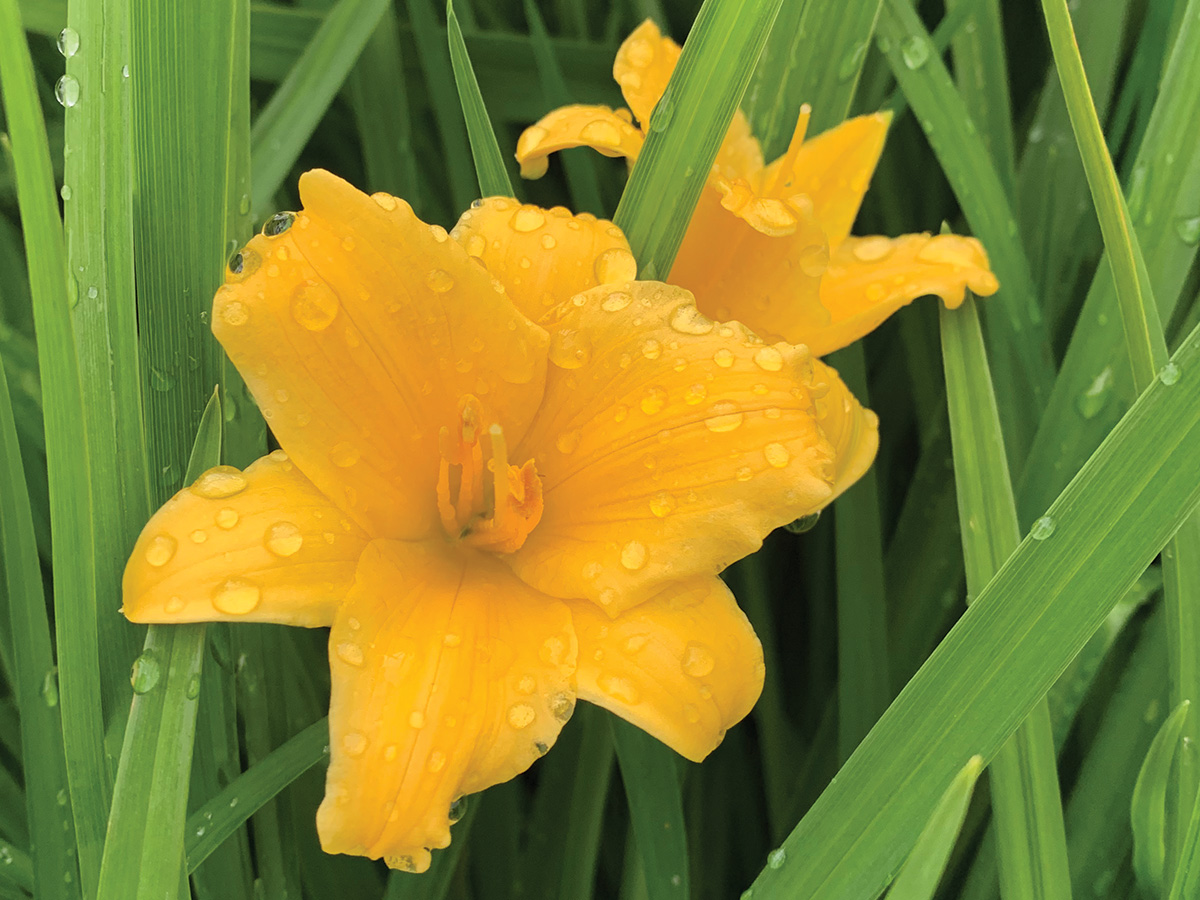Bless the rains down in Alberta

Photo by Calgary Horticultural Society
While last year we had a very hot and dry June, it is usually the month for rainfall. Ensuring that our plants start the growing season with enough moisture to support their vigorous spring growth is important. Growing, leafing out, and blooming require nutrients. Plants get their nutrients from the water they uptake from the soil. How can we ensure that our garden gets the water it needs, but doesn’t put pressure on our drinking water and water bill?
By capturing rainwater.
Rain barrels are great for collecting rainwater. There are many styles and certainly one that could suit any gardener’s preference.
However, they can quickly fill to overflowing during a typical Calgary rain event. Is there something else we can do to capture rainwater?
You likely have seen projects being built around the city designed for this purpose: dry ponds, engineered wetlands, and engineered rain gardens. These structures capture rainwater and runoff and help clean it before it becomes part of the natural water system. On a smaller scale, you can build a rain garden in your yard.
Rain gardens can be placed anywhere in the yard. It is a depression that is created to capture water. The garden has an inflow, usually the downspout from eaves, a flat-bottomed basin, and an outflow. The purpose of a rain garden is to let the water pool, then drain. The water should infiltrate the soil within 24 hours, which is too quick to be mosquito habitat.
To ensure the house foundation area is kept dry, the rain garden should be situated at least 2 m away. In a basic rain garden design, the flat bottom of the basin is 10 cm below the ground surface.
The sides of the depression gradually slope upward, over at least a 30 cm distance, to ground level. To ensure good drainage for this depth of pool, there should be 30 cm of topsoil below the basin.
When the garden is first built, to provide weed suppression, the area should be covered with shredded bark mulch. This mulch locks together, but doesn’t restrict downward moisture flow, and won’t float out of position. The size of the garden is one quarter the size of the roof which feeds the eaves trough leading to the infill downspout.
The bottom of the infill downspout is at the highest point of the garden. The outflow is usually opposite and slightly lower than the inflow. It is needed to let water flow gently out if pond capacity is exceeded. There should be at least one metre of space between the outflow and any walkways.
Once the structure is in place, plants are added. Any plant used needs to be able to tolerate some wetness. Plants near the inflow need to appreciate receiving extra moisture every time it rains. Plants for this location include Alaskan burnet, Siberian iris, Ligularia, and Joe-pye weed.
Plants that don’t mind being inundated when the garden fills with water, but are also drought-tolerant, are good choices to place in the flat-bottomed area.
These plants include daylilies, spirea, and potentilla. Plants around the sides of the garden need to be drought tolerant, such as lady’s mantle and veronica. Also, select grasses such as tufted hair grass and feather reed grass for the garden. Plant ground covers, such as native strawberry and creeping jenny, to eventually replace the mulch. Whenever possible, select native plants to support our native pollinators. Also, consider plant bloom times to ensure the garden blooms from spring through fall.
While every gardener should have a rain barrel, it’s wonderful for capturing rainwater that is used to water containers and houseplants, installing a rain garden can give you a beautiful low-maintenance garden that can do more for the environment and your yard.
A simple one can be a weekend project. Research the details about how to install a rain garden in your yard — it could be a perfect garden project for June.
To learn more about gardening in the Calgary area, visit our website calhort.org.
